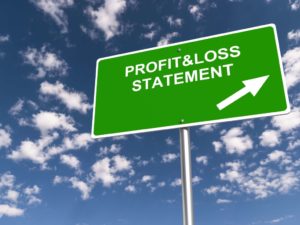
By taking the time to estimate your overhead costs and calculate your predetermined overhead rate, you can ensure that your prices are fair and accurate and that your profits aren’t getting eaten away by hidden costs. This $4 per hour overhead rate would then be applied to the number of direct labor hours for each job to allocate overhead costs. predetermined overhead rate formula Direct costs are costs directly tied to a product or service that a company produces. Direct costs include direct labor, direct materials, manufacturing supplies, and wages tied to production. To calculate the predetermined overhead rate, the marketing agency will need to add up all of its estimated overhead costs for the upcoming year.
Why are predetermined overhead rates important?
Allocation bases are known amounts that are measured when completing a process, such as labor hours, materials used, machine hours, or energy use. The more consistency there is between the total overhead and the allocation base, the more accurate the estimate of predetermined overhead will be. The company needs to use predetermined overhead rate to calculate the cost of goods sold and inventory balance. Cost of goods sold equal to the sales quantity multiply by the total cost per unit which include the overhead cost. We also use the same rate to calculate the inventory balance at the end of accounitng period.
Formula to Calculate POHR.
The best way to predict your overhead costs is to track these costs on a monthly basis. Fixed costs are those that remain the same even when production or sales volume changes. So if your business is selling more products, you’ll still be paying the same amount in rent. Optimize processes – Streamline workflows around everything from inventory to invoicing to save time and cut labor costs. Setting overhead budgets and benchmarks for each department also helps control spending. If costs rise above predetermined limits, action can be taken to reduce expenses.
Predetermined Overhead Rate (Definition, Example, Formula, and Calculation)
After reviewing the product cost and consulting with the marketing department, the sales prices were set. The sales price, cost of each product, and resulting gross profit are shown in Figure 6.6. Unexpected expenses can be a result of a big difference between actual and estimated overheads. Also, if the rates determined are nowhere close to being accurate, the decisions based on those rates will be inaccurate, too. To achieve continuous improvement and optimize production workflows, it’s important to identify those processes whose costs reveal inefficiencies robbing your coffers.
- In this case, these numbers are not estimated because they are historical figures.
- If you’re trying to make an estimate of manufacturing costs, you’re probably wondering how to determine predetermined overhead rate.
- It allows overhead to be assigned to production based on activity (DLHs), providing insight into profitability across products.
- Businesses should understand which overhead costs are fixed vs variable when budgeting and setting overhead rates.
- Direct costs are expenses traced to specific products like raw materials or direct labor.
- As such, you and your peers have agreed to set the predetermined overhead rate at 175% of the direct materials rate.
Larger organizations employ different allocation bases for determining the predetermined overhead rate in each production department. However, in recent years the manufacturing operations have started to use machine hours more predominantly as the allocation base. Managers and accounting personnel should work together to analyze the historical overhead information to look for relationships between the total overhead and one of the specific allocation bases. A manager may notice that the overhead rate is usually about one and a half times the cost of direct labor for a given project.

The effect of seasonality on your expenses, however, should be so nominal that it should not really affect accounting calculations. Applying the percentage conversion, we see Bob’s total overhead costs with regard to sales are 25%. Using an example business called Bob’s Quality Widgets, let’s take a look at four methods of predetermined overhead rate calculation using each of these allocation measures. Traditionally, overheads have been absorbed in the product cost based on a single basis of apportionment. For instance, in a labor-intensive environment, labor hours were used to absorb overheads. On the other hand, the machine hours were used to absorb overheads in a machine incentive environment.
How do you calculate overhead activity rate?
- We may earn a commission when you click on a link or make a purchase through the links on our site.
- The business is labor-intensive, and the total hours for the period are estimated to be 10,000.
- The predetermined rate usually be calculated at the beginning of the accounting period by relying on the management experience and prior year data.
- Direct costs typically are direct labor, direct machine costs, or direct material costs—all expressed in dollar amounts.
- Ahead of discussing how to calculate predetermined overhead rate, let’s define it.
- Further, the company uses direct labor hours to assign manufacturing overhead costs to products.
One of the most common examples is rent, which remains static no matter how many goods are produced. Whether you’re operating a major corporation or running a local small business, managing the costs that come with doing business requires a thorough understanding of both direct and indirect spending. Implementation of ABC requires identification and record maintenance for various overheads. This record maintenance and cost monitoring is expected to increase the administrative cost. So, the businesses need to do a cost-benefit analysis before implementing the ABC system of costing.
- So in summary, the overhead rate formula relates your indirect operating costs to production costs.
- To allocate overhead costs, an overhead rate is applied to the direct costs tied to production by spreading or allocating the overhead costs based on specific measures.
- Here’s how a service-based business, namely a marketing agency, might go about calculating its predetermined overhead rate.
- Using the formula, you divide the total overhead cost ($553,000) by the allocation base ($316,000) to get an allocation rate of 1.75 (175%).
- Allocating overhead this way provides better visibility into how much overhead each department truly consumes.
- Another way to view it is overhead costs are those production costs that are not categorized as direct materials or direct labor.
- If you’re considering the option of leasing your equipment, check out our list of pros and cons before you go any further.
- A variable cost and an integral part of your company’s cost of goods sold, direct labor is the total salaries and wages paid at an hourly rate to production employees.
- By factoring in overhead costs in this manner, the company arrives at a more accurate COGS.
- To achieve continuous improvement and optimize production workflows, it’s important to identify those processes whose costs reveal inefficiencies robbing your coffers.
- It is important to include indirect costs that are based on this overhead rate in order to price a product or service appropriately.
This calculation further illustrates how much of every dollar goes to overhead costs. For example, in the case above, for every dollar the company makes, 15 cents is devoted to overhead. A variable cost and an integral part of your company’s cost of goods sold, direct labor is the total salaries and wages paid at an hourly rate to production employees. Larger businesses centered https://www.bookstime.com/ on manufacturing often have additional, and much larger, indirect expenses to consider, however, and so more often choose to calculate their overhead rate quarterly or even monthly. Additionally, you should recalculate your predetermined overhead rate any time there is a significant change in your business, such as the addition of new equipment or a change in your product line.

It is equal to the estimate overhead divided by the estimate production quantity. Since both the numerator and denominator of the calculation are comprised of estimates, it is possible that the result will not bear much resemblance to the actual overhead rate. To keep this from being an issue, base the estimates on recent actual history, adjusted for your best estimate of production activity in the near future.
